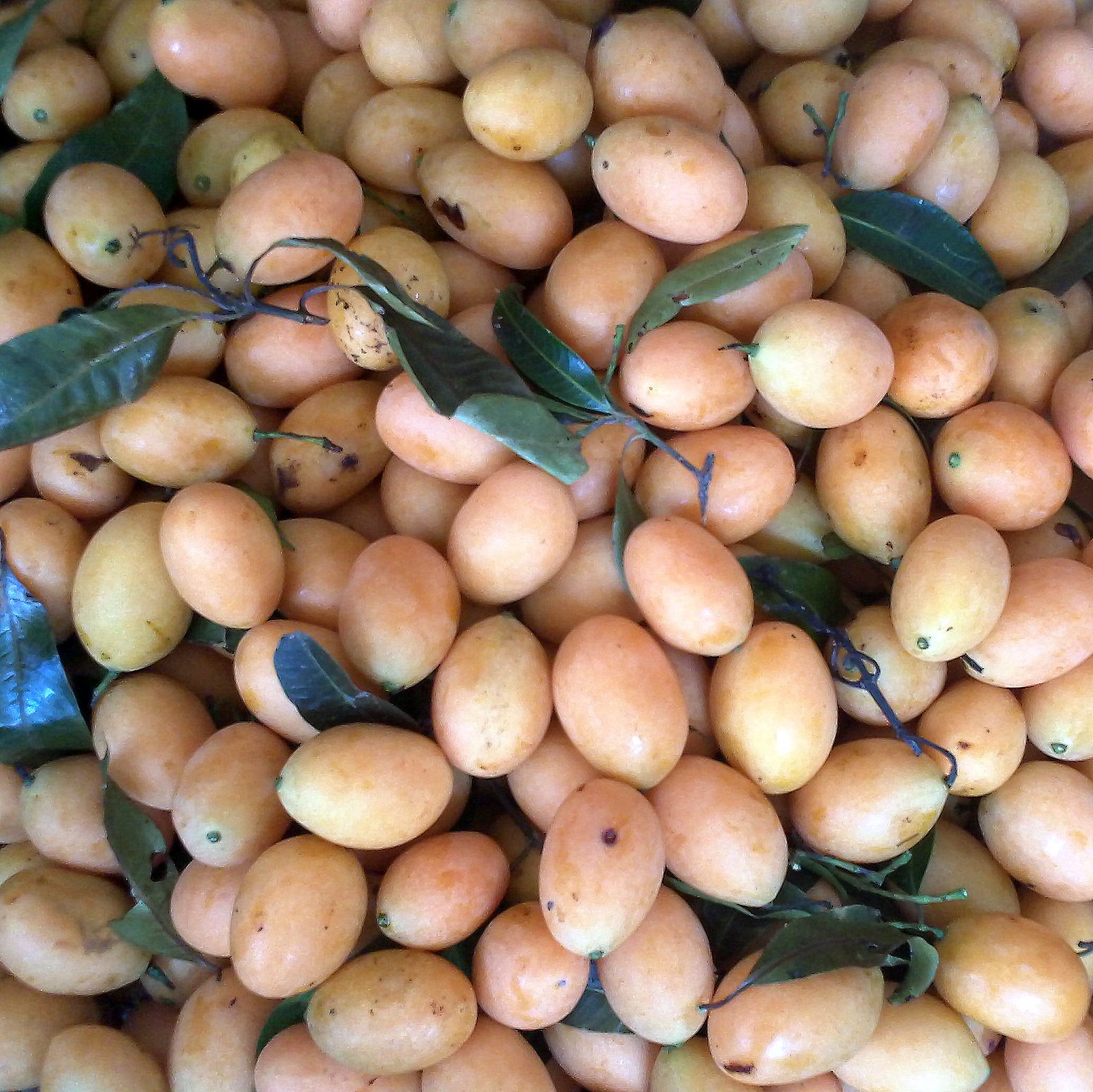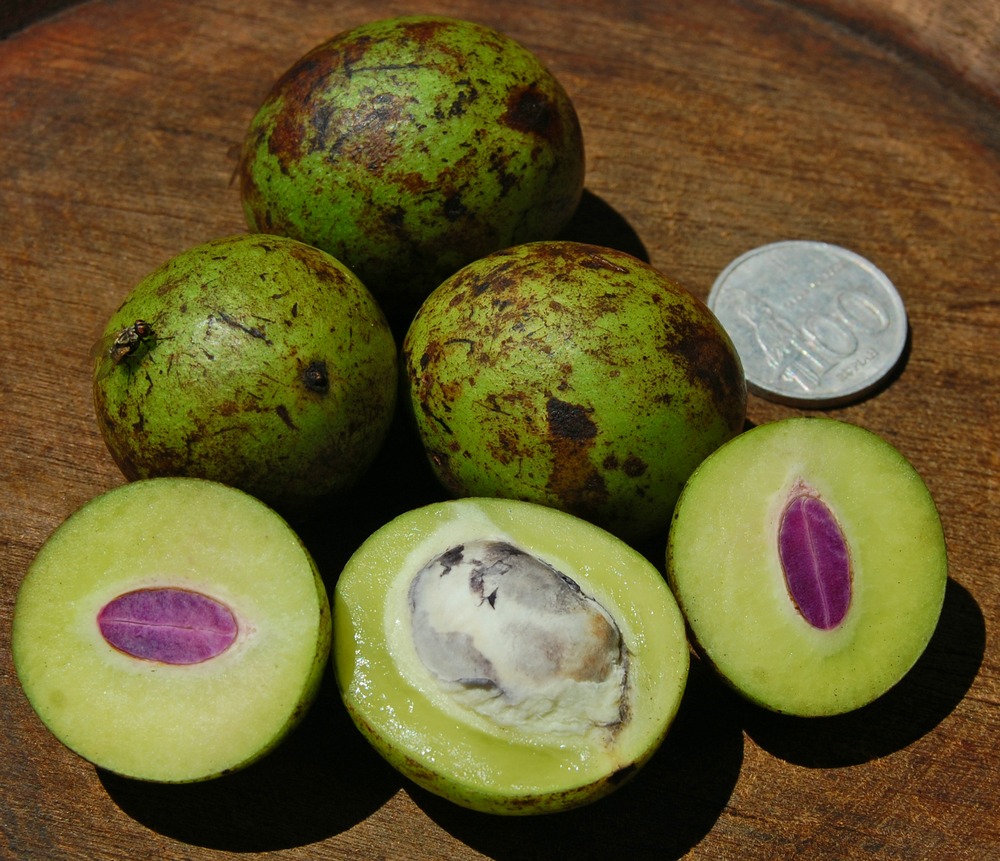|
Bouea
''Bouea''Meisner CDF (1837) ''Pl. Vasc. Gen.'' 1: 75. is an Asian genus of fruiting trees in the family Anacardiaceae. Species can be found in southern China, Indo-China and Malesia. Species Plants of the World Online and the Catalogue of Life list: * '' Bouea macrophylla'' Griff. (Thailand, Peninsular Malaysia, Sumatra, Java) * '' Bouea oppositifolia'' ( Roxb.) Meisn. - type species In International_Code_of_Zoological_Nomenclature, zoological nomenclature, a type species (''species typica'') is the species name with which the name of a genus or subgenus is considered to be permanently taxonomically associated, i.e., the spe ... (throughout range) * '' Bouea poilanei'' Evrard (Vietnam only) References External links * * {{taxonbar, from=Q9297308 Fruits originating in Asia Trees of Indo-China Trees of Malesia Anacardiaceae genera Taxa named by Carl Meissner ... [...More Info...] [...Related Items...] OR: [Wikipedia] [Google] [Baidu] |
Bouea Oppositifolia
''Bouea oppositifolia'', also known as plum mango, kundang, kundangan or remenia, is a species of flowering plant, a fruit tree in the mango Family (biology), family, that is native to Indochina and Southeast Asia. The tree and its fruit are commonly confused with the closely related ''Bouea macrophylla''. ''B. macrophylla'' has lanceolate leaves and round yellow fruit, while ''B. oppositifolia'' has oblong leaves and oval red/yellow fruit.https://www.researchgate.net/figure/Morphological-characteristics-of-B-macrophylla-and-B-oppositifolia-based-on-the_tbl5_311823505 Description The tree grows to 10–20 m in height with a short, low-branching trunk (botany), bole and a dense rounded canopy. The oval leaves are smooth and leathery, 3–15 cm long by 1.5–5 cm wide. The inflorescences comprise clusters of small, white to pale yellow flowers at the leaf axils. The fruits are round to ovoid drupes 1.5–2.5 cm long by 1–2.5 cm wide, turning from yello ... [...More Info...] [...Related Items...] OR: [Wikipedia] [Google] [Baidu] |
Bouea Macrophylla
''Bouea macrophylla'', commonly known as gandaria, Burmese plum, Marian plum, plum mango or mango plum in English, is a species of flowering plant native to Southeast Asia. The tree belongs to the family Anacardiaceae which also includes mango and cashew. The tree and its fruit are commonly confused with the closely related ''Bouea oppositifolia'', both of which show considerable morphological variation.https://www.researchgate.net/figure/Morphological-characteristics-of-B-macrophylla-and-B-oppositifolia-based-on-the_tbl5_311823505 ''B. macrophylla'' has long lanceolate leaves and round yellow fruit, while ''B. oppositifolia'' has shorter oblong leaves and oval red/yellow fruit. Description The evergreen tree grows to heights of 25 meters. Its leaves are lanceolate to elliptic in shape (see: Leaf shape), and range from 13 to 45 cm (5 to 17 inches) long and from 5 to 7 cm (2 to 3 inches) wide. The unripe fruit (resembling a mango) are green in colour and ma ... [...More Info...] [...Related Items...] OR: [Wikipedia] [Google] [Baidu] |
Bouea Poilanei
''Bouea''Meisner CDF (1837) ''Pl. Vasc. Gen.'' 1: 75. is an Asian genus of fruiting trees in the family Anacardiaceae. Species can be found in southern China, Indo-China and Malesia. Species Plants of the World Online and the Catalogue of Life list: * ''Bouea macrophylla'' Griff. (Thailand, Peninsular Malaysia, Sumatra, Java) * ''Bouea oppositifolia'' ( Roxb.) Meisn. - type species In International_Code_of_Zoological_Nomenclature, zoological nomenclature, a type species (''species typica'') is the species name with which the name of a genus or subgenus is considered to be permanently taxonomically associated, i.e., the spe ... (throughout range) * '' Bouea poilanei'' Evrard (Vietnam only) References External links * * {{taxonbar, from=Q9297308 Fruits originating in Asia Trees of Indo-China Trees of Malesia Anacardiaceae genera Taxa named by Carl Meissner ... [...More Info...] [...Related Items...] OR: [Wikipedia] [Google] [Baidu] |
Anacardiaceae Genera
The Anacardiaceae, commonly known as the cashew family or sumac family, are a Family (biology), family of flowering plants, including about 83 genera with about 860 known species. Members of the Anacardiaceae bear fruits that are drupes and in some cases produce urushiol, an Irritation, irritant. The Anacardiaceae include numerous genera, several of which are economically important, notably cashew (in the type genus ''Anacardium''), mango, Toxicodendron vernicifluum, Chinese lacquer tree, Spondias mombin, yellow mombin, Peruvian pepper, poison ivy, poison oak, sumac, Cotinus, smoke tree, Sclerocarya birrea, marula and Amphipterygium adstringens, cuachalalate. The genus ''Pistacia'' (which includes the pistachio and Pistacia lentiscus, mastic tree) is now included, but was previously placed in its own family, the Pistaciaceae. The cashew family is more abundant in warm or tropical regions with only a few species living in the temperate zones. Mostly native to tropical Americas, ... [...More Info...] [...Related Items...] OR: [Wikipedia] [Google] [Baidu] |
Anacardiaceae
The Anacardiaceae, commonly known as the cashew family or sumac family, are a family of flowering plants, including about 83 genera with about 860 known species. Members of the Anacardiaceae bear fruits that are drupes and in some cases produce urushiol, an irritant. The Anacardiaceae include numerous genera, several of which are economically important, notably cashew (in the type genus '' Anacardium''), mango, Chinese lacquer tree, yellow mombin, Peruvian pepper, poison ivy, poison oak, sumac, smoke tree, marula and cuachalalate. The genus '' Pistacia'' (which includes the pistachio and mastic tree) is now included, but was previously placed in its own family, the Pistaciaceae. The cashew family is more abundant in warm or tropical regions with only a few species living in the temperate zones. Mostly native to tropical Americas, Africa and India. '' Pistacia'' and some species of '' Rhus'' can be found in southern Europe, '' Rhus'' species can be found in much of N ... [...More Info...] [...Related Items...] OR: [Wikipedia] [Google] [Baidu] |
Trees Of Malesia
In botany, a tree is a perennial plant with an elongated stem, or trunk, usually supporting branches and leaves. In some usages, the definition of a tree may be narrower, e.g., including only woody plants with secondary growth, only plants that are usable as lumber, or only plants above a specified height. But wider definitions include taller palms, tree ferns, bananas, and bamboos. Trees are not a monophyletic taxonomic group but consist of a wide variety of plant species that have independently evolved a trunk and branches as a way to tower above other plants to compete for sunlight. The majority of tree species are angiosperms or hardwoods; of the rest, many are gymnosperms or softwoods. Trees tend to be long-lived, some trees reaching several thousand years old. Trees evolved around 400 million years ago, and it is estimated that there are around three trillion mature trees in the world currently. A tree typically has many secondary branches supported clear of ... [...More Info...] [...Related Items...] OR: [Wikipedia] [Google] [Baidu] |
Trees Of Indo-China
In botany, a tree is a perennial plant with an elongated stem, or trunk, usually supporting branches and leaves. In some usages, the definition of a tree may be narrower, e.g., including only woody plants with secondary growth, only plants that are usable as lumber, or only plants above a specified height. But wider definitions include taller palms, tree ferns, bananas, and bamboos. Trees are not a monophyletic taxonomic group but consist of a wide variety of plant species that have independently evolved a trunk and branches as a way to tower above other plants to compete for sunlight. The majority of tree species are angiosperms or hardwoods; of the rest, many are gymnosperms or softwoods. Trees tend to be long-lived, some trees reaching several thousand years old. Trees evolved around 400 million years ago, and it is estimated that there are around three trillion mature trees in the world currently. A tree typically has many secondary branches supported clear of t ... [...More Info...] [...Related Items...] OR: [Wikipedia] [Google] [Baidu] |
Fruits Originating In Asia
In botany, a fruit is the seed-bearing structure in flowering plants (angiosperms) that is formed from the ovary after flowering. Fruits are the means by which angiosperms disseminate their seeds. Edible fruits in particular have long propagated using the movements of humans and other animals in a symbiotic relationship that is the means for seed dispersal for the one group and nutrition for the other; humans, and many other animals, have become dependent on fruits as a source of food. Consequently, fruits account for a substantial fraction of the world's agricultural output, and some (such as the apple and the pomegranate) have acquired extensive cultural and symbolic meanings. In common language and culinary usage, ''fruit'' normally means the seed-associated fleshy structures (or produce) of plants that typically are sweet (or sour) and edible in the raw state, such as apples, bananas, grapes, lemons, oranges, and strawberries. In botanical usage, the term ''fruit'' also inc ... [...More Info...] [...Related Items...] OR: [Wikipedia] [Google] [Baidu] |
Charles Marie Evrard
Charles is a masculine given name predominantly found in English and French speaking countries. It is from the French form ''Charles'' of the Proto-Germanic name (in runic alphabet) or ''*karilaz'' (in Latin alphabet), whose meaning was "free man". The Old English descendant of this word was '' Ċearl'' or ''Ċeorl'', as the name of King Cearl of Mercia, that disappeared after the Norman conquest of England. The name was notably borne by Charlemagne (Charles the Great), and was at the time Latinized as ''Karolus'' (as in ''Vita Karoli Magni''), later also as '' Carolus''. Etymology The name's etymology is a Common Germanic noun ''*karilaz'' meaning "free man", which survives in English as churl (James (< Latin ''-us'', see Spanish/ Portuguese ''Carlos''). According to Julius Pokorny, the historical linguist and Indo-European studies, Indo-Europeanist, the root meaning of Charles is "old man", from Proto-Indo-European language, Indo-European *wikt:Appendix:Proto-Indo-Eu ... [...More Info...] [...Related Items...] OR: [Wikipedia] [Google] [Baidu] |
Carl Daniel Friedrich Meisner
Carl may refer to: *Carl, Georgia, city in USA *Carl, West Virginia, an unincorporated community *Carl (name), includes info about the name, variations of the name, and a list of people with the name *Carl², a TV series * "Carl", an episode of television series ''Aqua Teen Hunger Force'' * An informal nickname for a student or alum of Carleton College CARL may refer to: *Canadian Association of Research Libraries *Colorado Alliance of Research Libraries See also *Carle (other) *Charles *Carle, a surname *Karl (other) *Karle (other) Karle may refer to: Places * Karle (Svitavy District), a municipality and village in the Czech Republic * Karli, India, a town in Maharashtra, India ** Karla Caves, a complex of Buddhist cave shrines * Karle, Belgaum, a settlement in Belgaum ... {{disambig ja:カール zh:卡尔 ... [...More Info...] [...Related Items...] OR: [Wikipedia] [Google] [Baidu] |
Type Species
In International_Code_of_Zoological_Nomenclature, zoological nomenclature, a type species (''species typica'') is the species name with which the name of a genus or subgenus is considered to be permanently taxonomically associated, i.e., the species that contains the biological Type (biology), type wiktionary:en:specimen, specimen (or specimens). Article 67.1 A similar concept is used for suprageneric groups and called a type genus. In botanical nomenclature, these terms have no formal standing under the International Code of Nomenclature for algae, fungi, and plants, code of nomenclature, but are sometimes borrowed from zoological nomenclature. In botany, the type of a genus name is a specimen (or, rarely, an illustration) which is also the type of a species name. The species name with that type can also be referred to as the type of the genus name. Names of genus and family ranks, the various subdivisions of those ranks, and some higher-rank names based on genus names, have suc ... [...More Info...] [...Related Items...] OR: [Wikipedia] [Google] [Baidu] |




